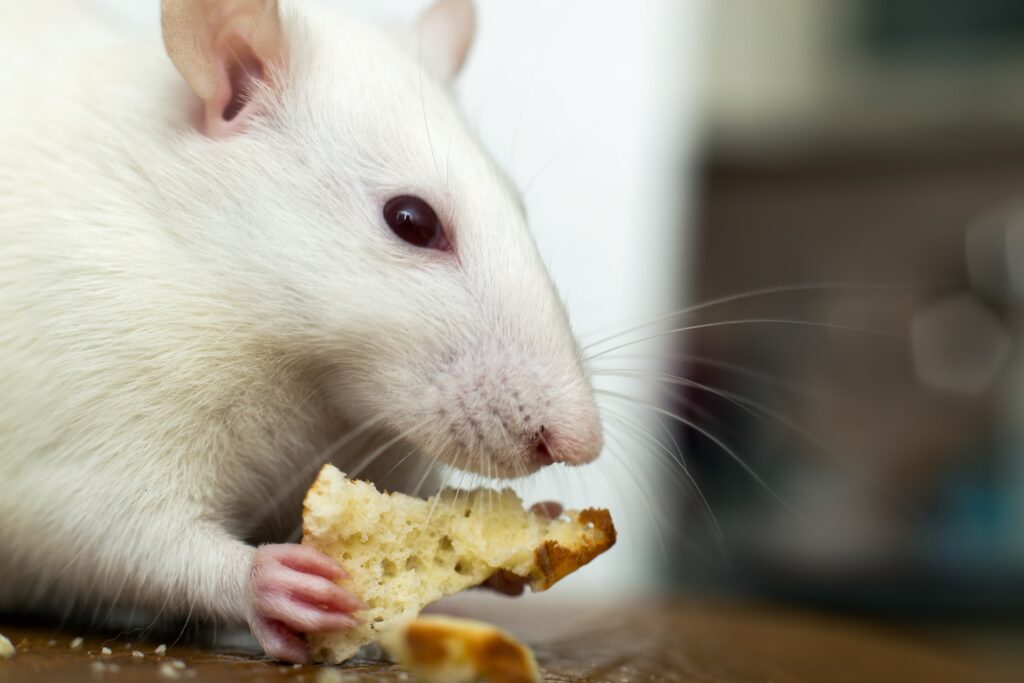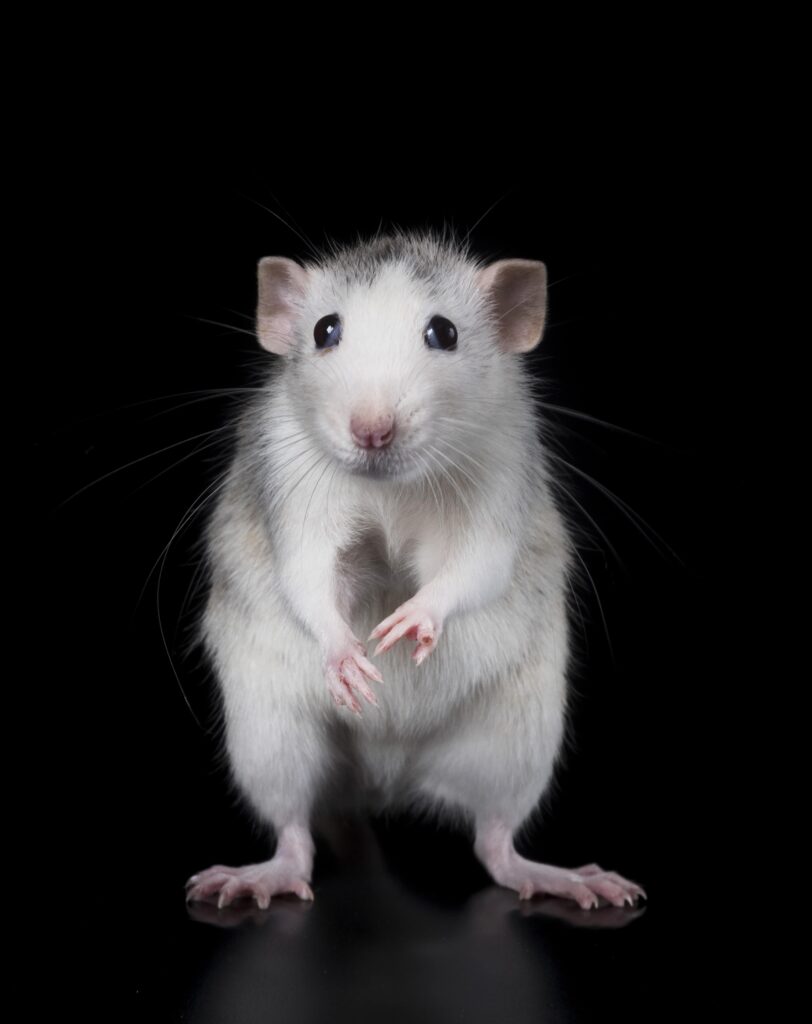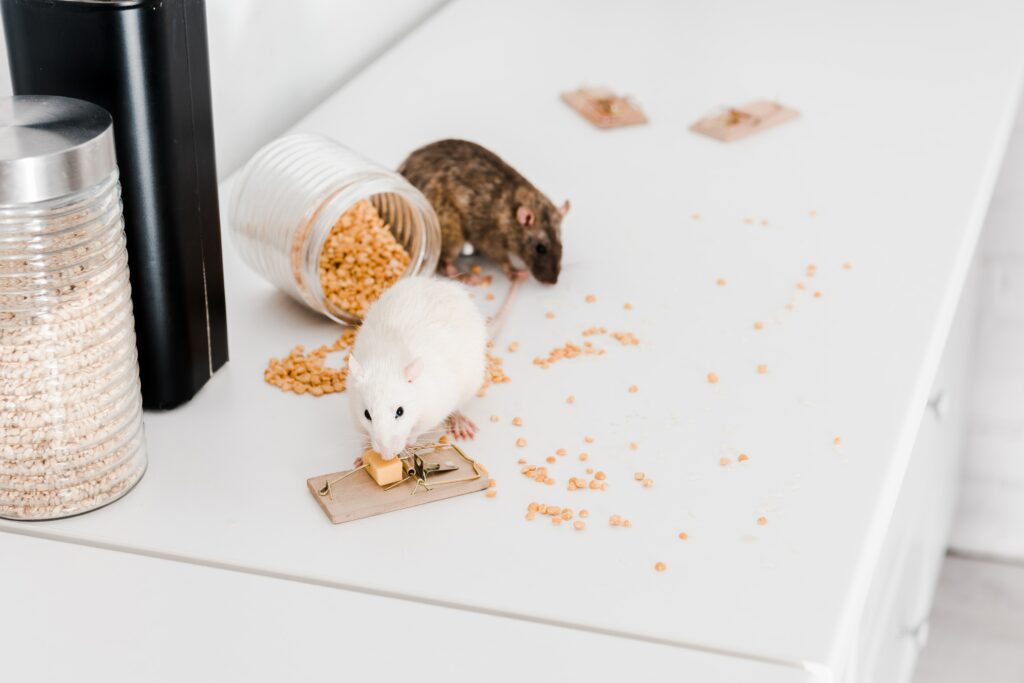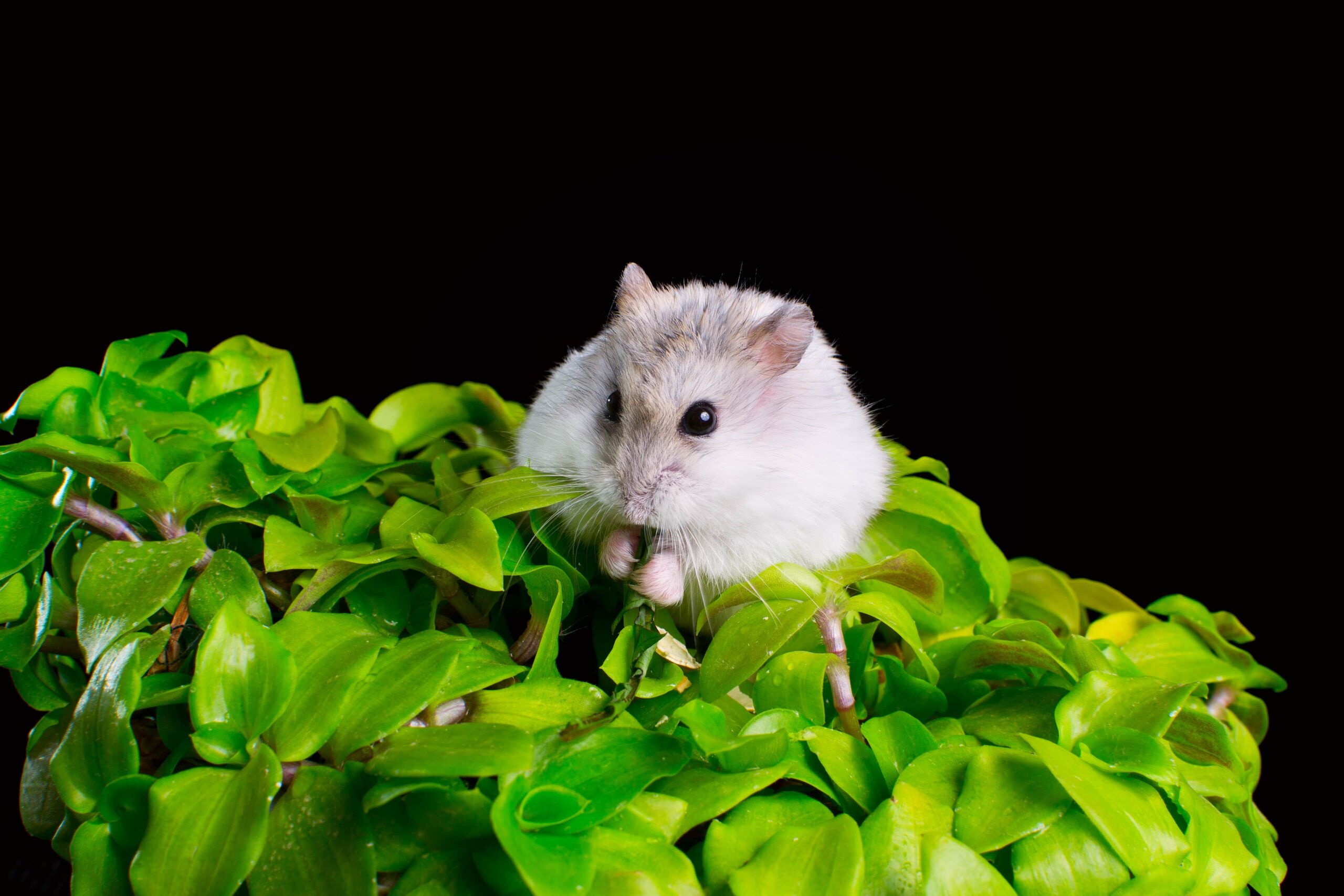The Resilience of Mice Across Different Environments
Mice are fascinating creatures that have captivated human attention for centuries. They are one of the most adaptable species on the planet and can thrive in a wide range of environments, from cities to rural farmland and beyond. Their ability to survive in different conditions is due to their resourcefulness, intelligence, and agility.
Despite their small size, mice have a significant impact on human life. They can be household pests that cause damage to buildings, contaminate food supplies with urine stains and droppings, and spread disease.
However, they also play important ecological roles as prey for larger predators such as birds of prey, snakes, and mammals like cats. In this article, we will explore the different environments where mice live and how they adapt to each one.
Whether you’re dealing with an existing mouse problem or infestation or want to take preventive measures against attracting them in the first place, understanding these adaptable creatures is essential. So let’s dive into the world of mice!
Need Professional Assistance for Mouse Infestation? Count on our experienced team for efficient rodent control. Learn about our top-notch services and solutions by visiting our article on professional rodent control and removal!
Mice Infestations in Residential Areas
Discover the challenges and effective strategies for dealing with mice infestations in residential areas. Our comprehensive article on Mice Infestations in Residential Areas sheds light on the common entry points, nesting habits, and prevention techniques to keep your home rodent-free. Learn about effective mouse control methods tailored for residential settings and create a safe and comfortable living environment for you and your family.
Mice in Commercial Buildings and Workplaces
Explore the implications of mice infestations in commercial buildings and workplaces. Our informative article on Mice in Commercial Buildings and Workplaces highlights the potential risks posed by mice in business settings. Gain insights into the importance of prompt action, effective prevention measures, and professional pest control services. Ensure a clean and hygienic working environment free from mice-related issues.
Mice Control Strategies for Farms and Agricultural Settings
Uncover effective mice control strategies specifically designed for farms and agricultural settings. In our detailed article on Mice Control Strategies for Farms and Agricultural Settings, you’ll discover practical methods to protect crops, livestock, and infrastructure from mice infestations. Learn about integrated pest management techniques, preventative measures, and sustainable solutions to mitigate the impact of mice on agricultural operations.
Dealing with Mice in Outdoor Spaces and Gardens
Learn how to effectively deal with mice in outdoor spaces and gardens to safeguard your plants and property. Our article on Dealing with Mice in Outdoor Spaces and Gardens provides valuable insights into mouse behavior in outdoor environments. Explore preventative measures, natural deterrents, and humane trapping methods to protect your outdoor spaces from mice-related damage and ensure a thriving garden.
Mice Behavior in Urban Environments
Unveil the fascinating behavior of mice in urban environments and understand their adaptation to city life. Our in-depth article on Mice Behavior in Urban Environments explores their nesting habits, foraging patterns, and survival strategies within urban settings. Gain a deeper understanding of how mice interact with their surroundings and discover effective urban pest management techniques. Stay informed and proactively address mice-related challenges in urban areas.
Mice in Urban Environments

Characteristics of urban environments that attract mice
Urban areas provide ideal living conditions for mice. The abundance of food and shelter makes it easy for a mouse population to thrive.
Trash cans, food packaging, and food scraps lying around on the streets are perfect sources of food for mice. Bird seed is another common attraction as it is often spilled or left out in bird feeders.
In addition to the readily available sources of food, urban areas also offer plenty of hiding places and shelter for mice. Buildings with cracks or holes provide ample spaces for them to establish nests, while sewers and other underground tunnels are popular hiding spots.
Common places where mice can be found in cities
Mice can be found in many different places within cities. They are often seen scurrying through alleys and streets, but they can also make their way into homes and other buildings. Classic glue traps and wooden snap traps are effective ways to remove mice from homes.
One common area where people may find mice is in their garages or sheds. These areas often have plenty of hiding spots where mice can nest comfortably, especially if there is lots of clutter lying around.
Another common place where people may find signs of a mouse infestation is in their kitchens or pantries. This is because these areas typically have an abundance of food sources that attract mice such as cereal grains.
Challenges Faced by urban mice
While urban environments offer many benefits to mouse populations, there are also several challenges that they face. One major challenge is accidental poisoning from people who use pesticides without following proper precautions. Other rodents such as roof rats can also pose a threat as they compete with mice for resources such as nesting sites and food sources.
Preventive measures such as keeping pet food stored away properly and regular cleaning routines help prevent infestations from developing. Traps set at strategic locations can also be effective in controlling mouse populations.
Differences Between Rural and Urban Environments for Mice

Country Mice vs City Mice: A Comparison
While mice are adaptable creatures, there are key differences between rural and urban environments that affect their behavior. In rural areas, mice have more access to natural habitats, such as fields and forests. This gives them a greater variety of food sources which may include grains, nuts, fruits, and insects.
They may also find shelter in tree branches or underground burrows. In contrast, urban environments offer a different set of living conditions for mice.
Buildings provide shelter and warmth from the elements while trash cans offer a source of food. However, the presence of humans and domestic animals adds a layer of danger to their lives.
Types of Habitats Preferred by Rural Mice
Home Sweet Home: Ideal Mouse Dwellings in the Country
There are several types of habitats that rural mice prefer over others. Barns and sheds provide ideal nesting areas because they offer shelter from the elements while still providing plenty of food sources.
Farmers’ fields with cereal grains or animal feed also attract mice since these crops provide ample nutrition. In addition to these man-made dwellings, rural mice also make their homes in natural habitats like forests or grasslands where they can find secluded spots such as hollow logs or underground burrows.
Predators and Other Challenges Faced by Rural Mice

The Struggle is Real: The Perils of Life in the Country for Mice
Rural mice face several challenges that urban mouse populations do not experience as frequently. One major challenge is dealing with predators such as snakes, birds of prey like hawks or owls, coyotes, or foxes who hunt them down for food. Disease control can also be difficult since rural mice may come into contact with other animals that can transmit diseases like ticks or fleas.
Additionally, domestic animals like cats and dogs may pose a threat to mice living in rural areas. Overall, while mice in different environments face their unique challenges, these resilient creatures continue to adapt and thrive despite hurdles along the way.
Mice in Domestic Settings: The Challenges and Solutions

Mouse Problems in Domestic Settings
Mice are naturally attracted to homes because they provide a rich source of food and shelter. However, domestic settings present a unique set of challenges for mice as well. They must contend with indoor temperatures, human activity, pets, and other predators that can make their lives miserable.
Once inside homes, mice have an uncanny ability to hide in hard-to-find places like hidden spaces within walls and attics. Unfortunately, these hiding places also make it difficult for homeowners to detect the presence of mice until it’s too late.
One of the most obvious signs of a mouse infestation is the presence of mouse droppings. These tiny brown pellets can be found in areas where mice feed or nest.
Other clues include chewed food packaging or nesting materials like cotton balls or finely shredded paper or fabric scraps. If left unchecked, a mouse population can quickly grow out of control and pose serious health risks to both humans and pets.
The Common Areas Where Mice Are Found
Mice infestations often start in kitchens where food is stored and prepared. Pantries that contain birdseed or other grains are especially attractive to mice looking for an easy meal.
Keeping food in sealed containers is one way to prevent mice from accessing your pantry shelves. Another common area where mice hide out is behind appliances like refrigerators or stoves because they provide warmth from the motor that runs them.
This makes finding any trapped house mouse particularly difficult. In addition to kitchens, attics and basements are prime real estate for rodents looking for nesting spots out of the way from human activity during their daily routine.
Preventing Mice Infestations with Traps Set Up Correctly

There are several strategies homeowners can use to prevent mice infestations before they become a problem. One effective method to kill mice is to use classic wooden snap traps baited with fresh bait.
These mouse traps are inexpensive and easy to use, but they must be placed in the right locations for maximum effectiveness. For instance, they should be placed along walls or in corners where mice tend to travel.
Another option is to seal any cracks or gaps in your home’s foundation or exterior using weather stripping or other materials. This will prevent mice from entering through gaps around windows and doors.
Preventing mice infestations in domestic settings requires a combination of preventive measures like keeping food properly stored and eliminating potential hiding places for rodents with the use of traps set up correctly. By being vigilant and taking action quickly when signs of a mouse infestation appear, you can protect your family’s health and keep your home rodent-free.
The Wild Side of Mice: Their Natural Habitats

Finding Mice in Their Natural Habitat
Mice are a ubiquitous presence in the natural world, and they can be found in a wide variety of habitats all over the globe. Some of the most common habitats that mice can be found in include fields, forests, meadows, and wetlands.
In these environments, mice have learned to adapt to their surroundings by developing unique behaviors and characteristics that allow them to thrive. One of the reasons why mice are so successful in these environments is because they can eat cereal grains and other organic materials that can be found in abundance.
They have also learned how to hide from predators by burrowing underground or hiding under soft materials like leaves or grass. These adaptations allow them to survive even when conditions are tough.
The Adaptations of Wild Mouse Populations
Another key aspect of mouse life in natural habitats is their ability to reproduce quickly and efficiently. Female mice can give birth to up to eight litters per year, with each litter consisting of several offspring.
This means that mouse populations can grow rapidly in favorable conditions. In addition, wild mice populations have developed unique behaviors and physical traits that allow them to survive harsh environmental conditions.
For example, some species have developed thicker fur coats during cold weather months as a way of staying warm. Others have developed specialized teeth for gnawing through tough materials like bark or roots.
The Role of Environmental Factors on Mouse Populations
Environmental factors play an important role in shaping wild mouse populations as well. Changes in weather patterns or available food sources can lead to fluctuations in rodent activity levels or population sizes. When food sources become scarce or weather conditions become too harsh, mouse populations may dwindle until more favorable conditions return.
Overall, studying wild mouse populations provides valuable insight into how these animals have learned to adapt and thrive in their natural environments. By understanding these adaptations and behaviors, we can develop better preventive measures to discourage mice from invading our homes or other living spaces.
Unusual Mouse Environments

Unexpected Places with Mouse Populations
Mice have long been associated with living near humans, often finding a way to enter homes, apartments, and even cars. However, these small rodents are incredibly adaptable and can be found in a variety of locations that might surprise you.
For instance, airports are notorious for having a high amount of mouse activity due to the abundance of food scraps left behind by travelers. Prisons also have a significant amount of mouse activity due to the lack of rodent control measures in place.
Some other unusual places where people have discovered mouse populations include zoos, hospitals, and even onboard airplanes. While it may seem surprising that mice could survive in such diverse environments, their ability to build nests out of whatever is available allows them to thrive in many different situations.
The Challenges Faced by Unique Mouse Populations
While mice are experts at adapting to different environments, there are still challenges they face when living in unusual locations. For example, mice found at airports or onboard airplanes may face the challenge of being exposed to various chemicals used for pest control without knowing how to avoid them. In these cases, an infestation can quickly turn into a safety hazard not only for travelers but also for airport staff.
In addition to this danger from chemical exposure or other health risks related to human environments like hospitals or prisons, there is also the issue of building nests out of improper materials like weather stripping or essential oils which can pose severe dangers for the family’s health and safety. This is why all locations with any sort of mouse population infestation need to take preventive measures through regular pest control programs using snap traps and rat poisons.
Despite these challenges faced by unique populations around us today such as rodents relying on human waste products instead natural food sources as well as unpredictable fluctuations within their local environments, mice continue to adapt and thrive in countless locations around the world. Whether it’s in the wild or a human-made environment, mice are survivors.
Conclusion: The Resilience of Mice in Different Environments
Mice are a fascinating and adaptable species that have managed to thrive in a variety of environments, from urban cities to rural farmlands. Despite facing numerous challenges, such as predators, disease, and competition with other animals, mice have been able to build strong populations due to their impressive resilience and adaptability. In urban environments, mice often take advantage of human structures and waste to build nests and find food.
However, they must also contend with other pests and the dangers of rat poison and traps set by humans. Despite these obstacles, mice have managed to survive in cities for centuries.
In rural areas, mice face different challenges than their urban counterparts. They may have to build nests underground or within structures to avoid predators like owls or foxes.
However, if they manage to find a good source of food, such as cereal grains or birdseed from farms or gardens, they can quickly establish large mouse populations. Even natural environments pose unique challenges for mice since they must compete with other animals for resources like food and shelter.
However, adaptations like camouflage coloring and finely shredded paper nests in small crevices or entry points in trees or under rocks have helped them survive. In domestic settings where people live with household pets like cats that naturally deter mice due to their tendency to hunt them down control measures such as steel wool patches on entry points near kitchen pipes also help get rid of mice without harming them.
Using kitty litter around the property can also deter mice since they dislike the smell while preventive measures such as keeping all surfaces clean without spills help discourage rodent infestations along with storing food properly so that it does not become an easy target for rodents. Overall it is clear that despite the many challenges presented by various environments across our planet’s various ecosystems mild adaptability makes them an essential part of our ecosystem; besides being cute little creatures.
Frequently Asked Questions:
Certain traits can impact the survival of mice in different environments, such as their ability to find food, evade predators, or adapt to specific habitats.
Yes, mice commonly live in social groups, forming colonies or communities.
The color of mice can affect their survival in different environments by providing camouflage or signaling certain traits to predators or potential mates.
Field mice and house mice differ primarily in their habitats, with field mice preferring outdoor areas like fields or meadows, while house mice are well-adapted to living alongside humans in indoor environments.
If this article resonated with you, you might also derive value from these related writings:
Uninvited Guests: The Hidden Health Risks and Diseases Lurking in Your Home’s Mouse Population
Mouse Infestation Eradication: Why Hiring a Professional Exterminator Is Your Best Bet








